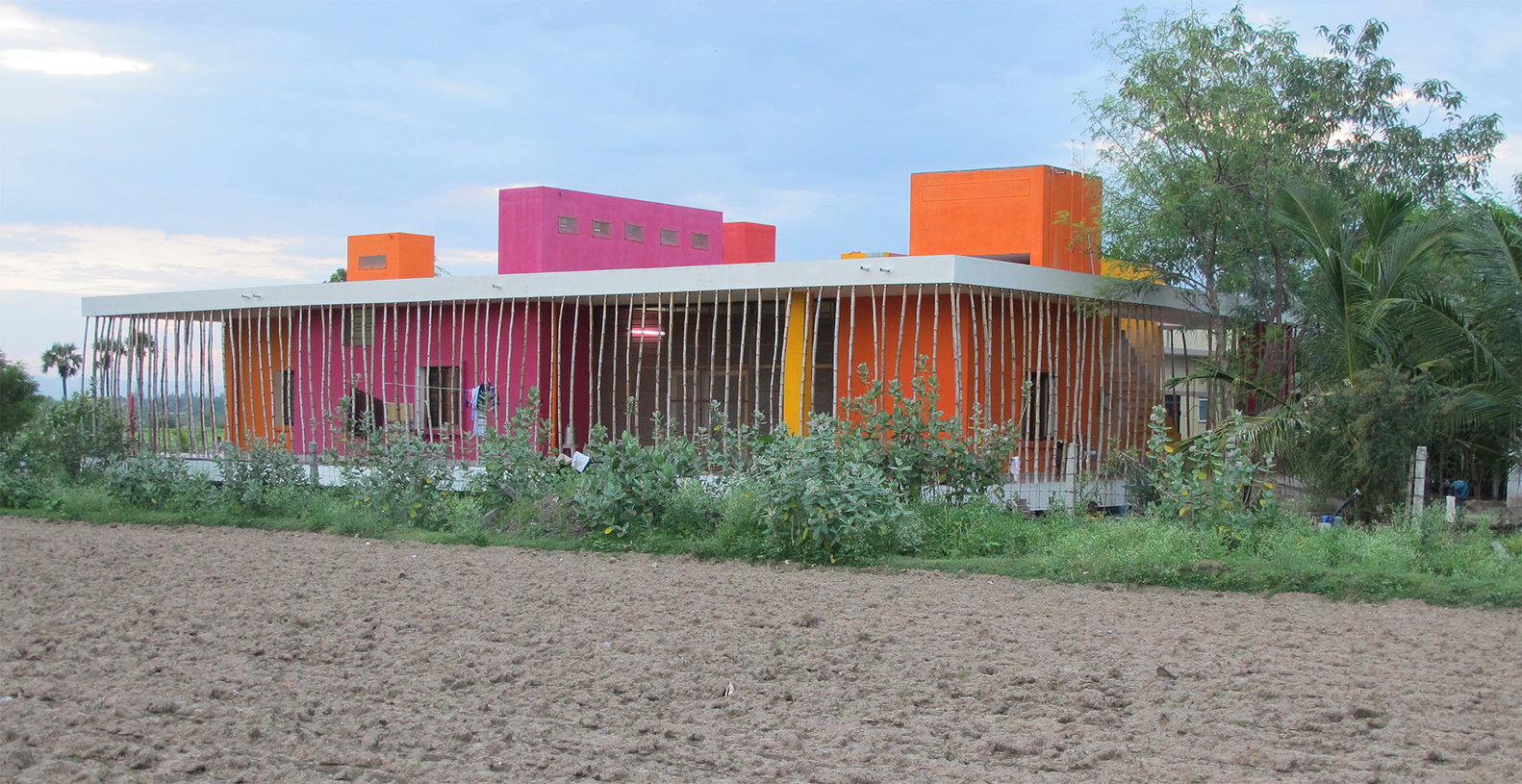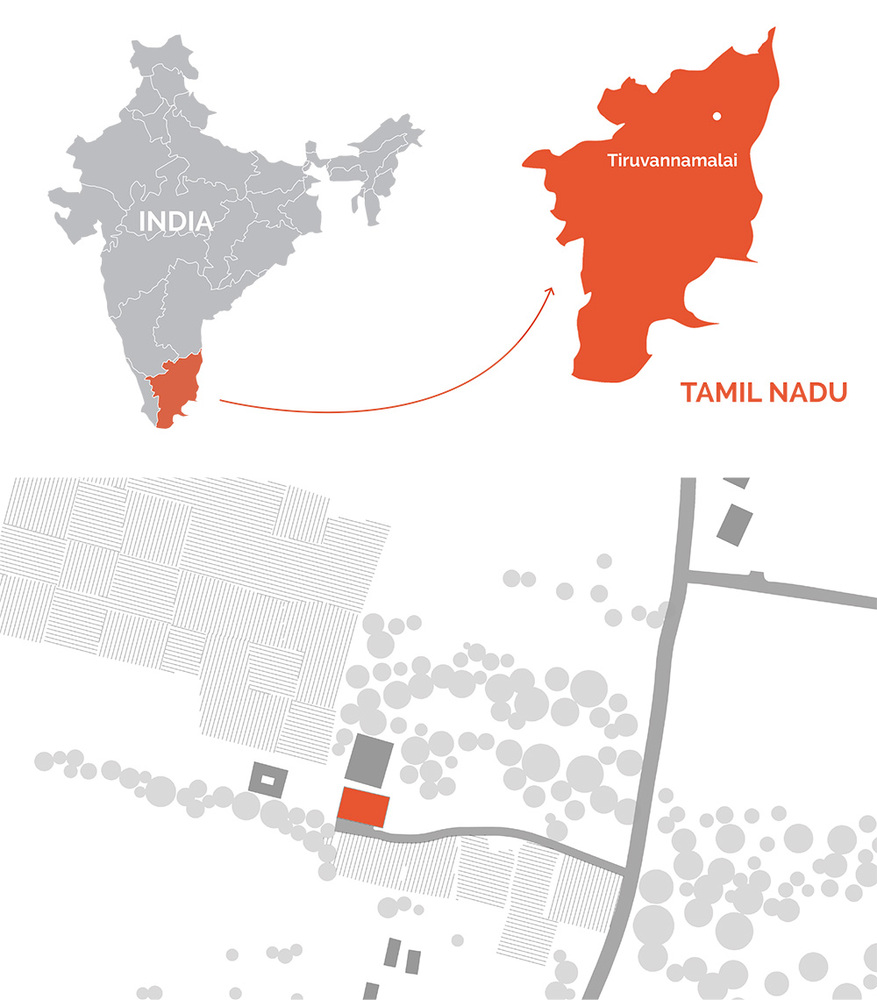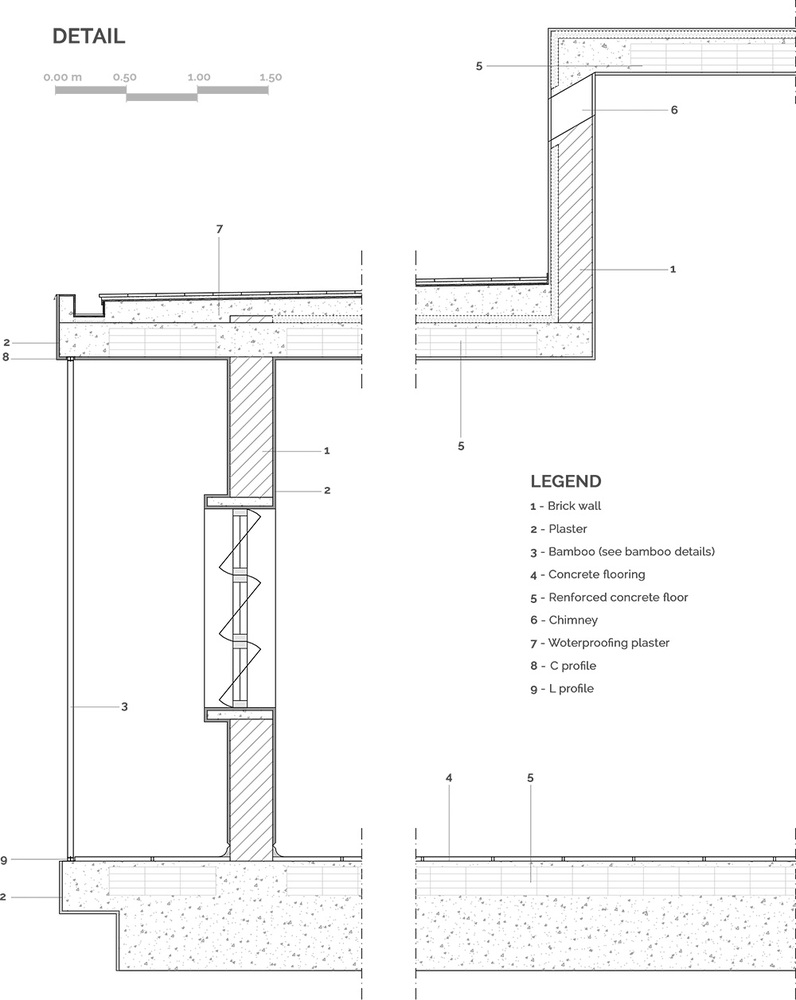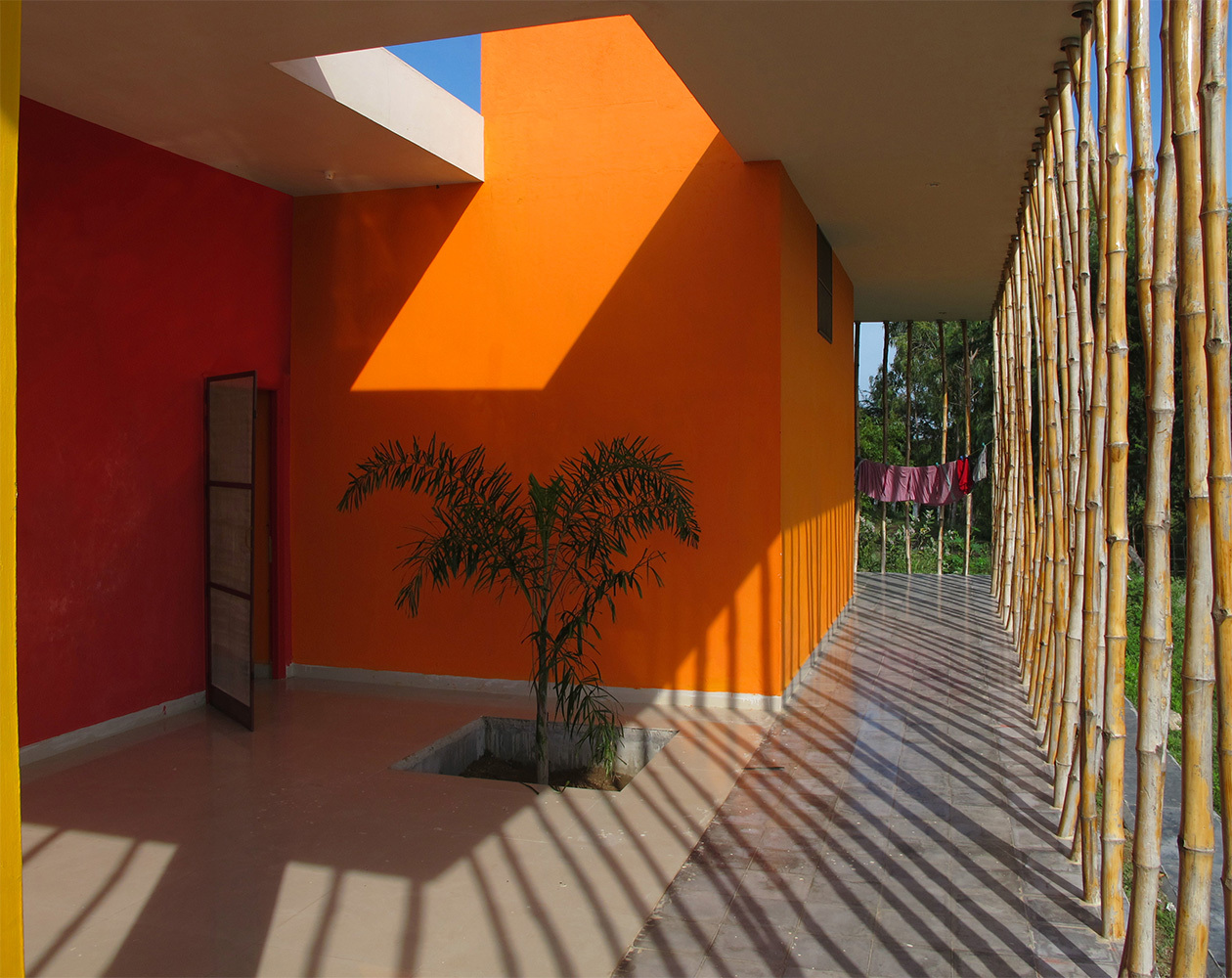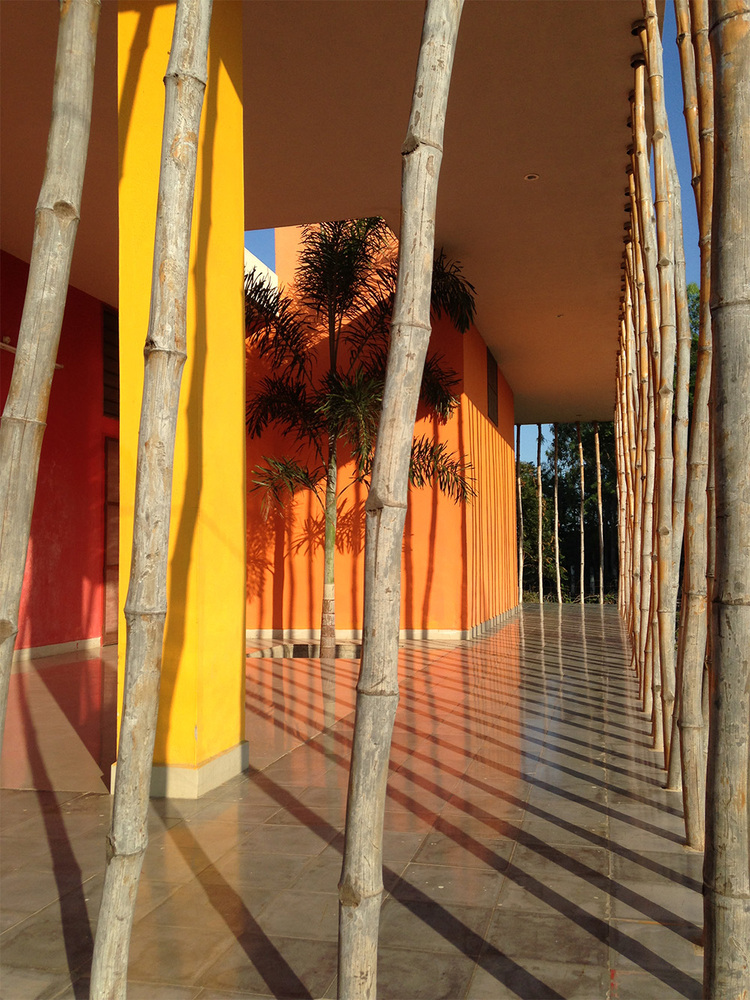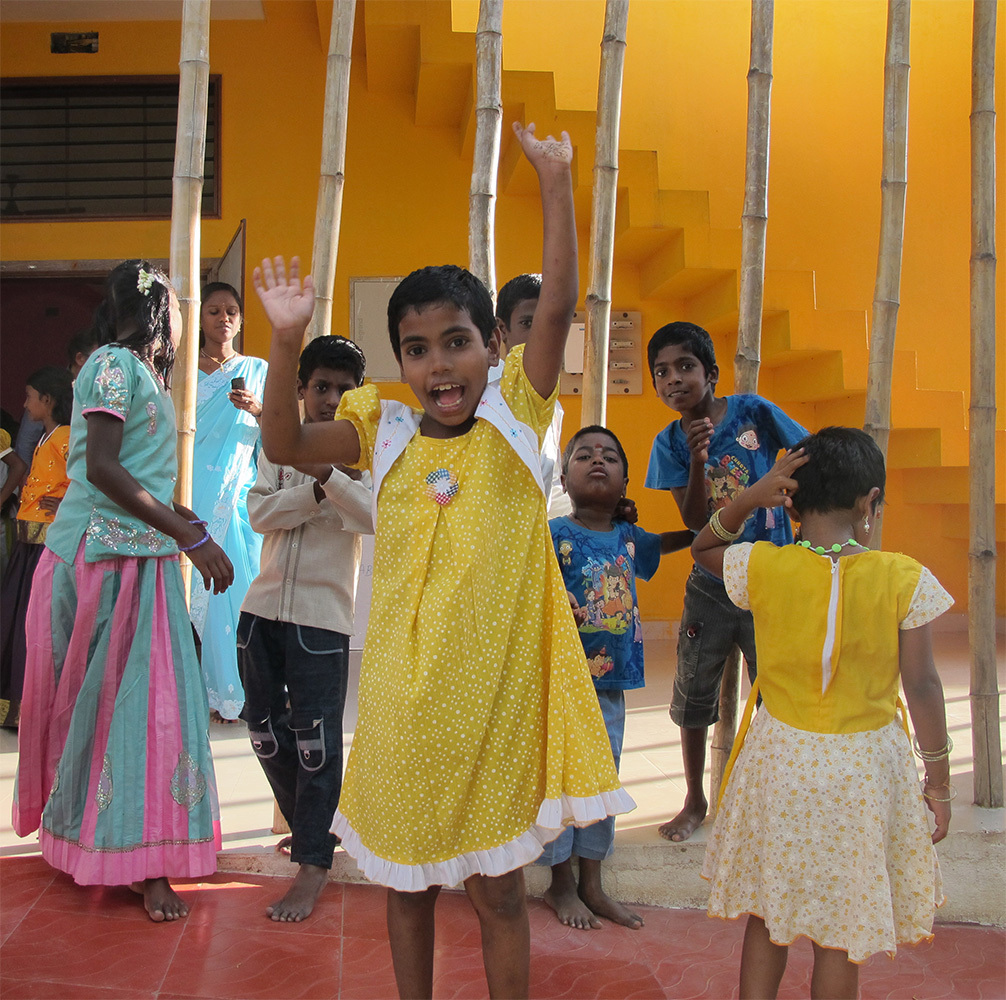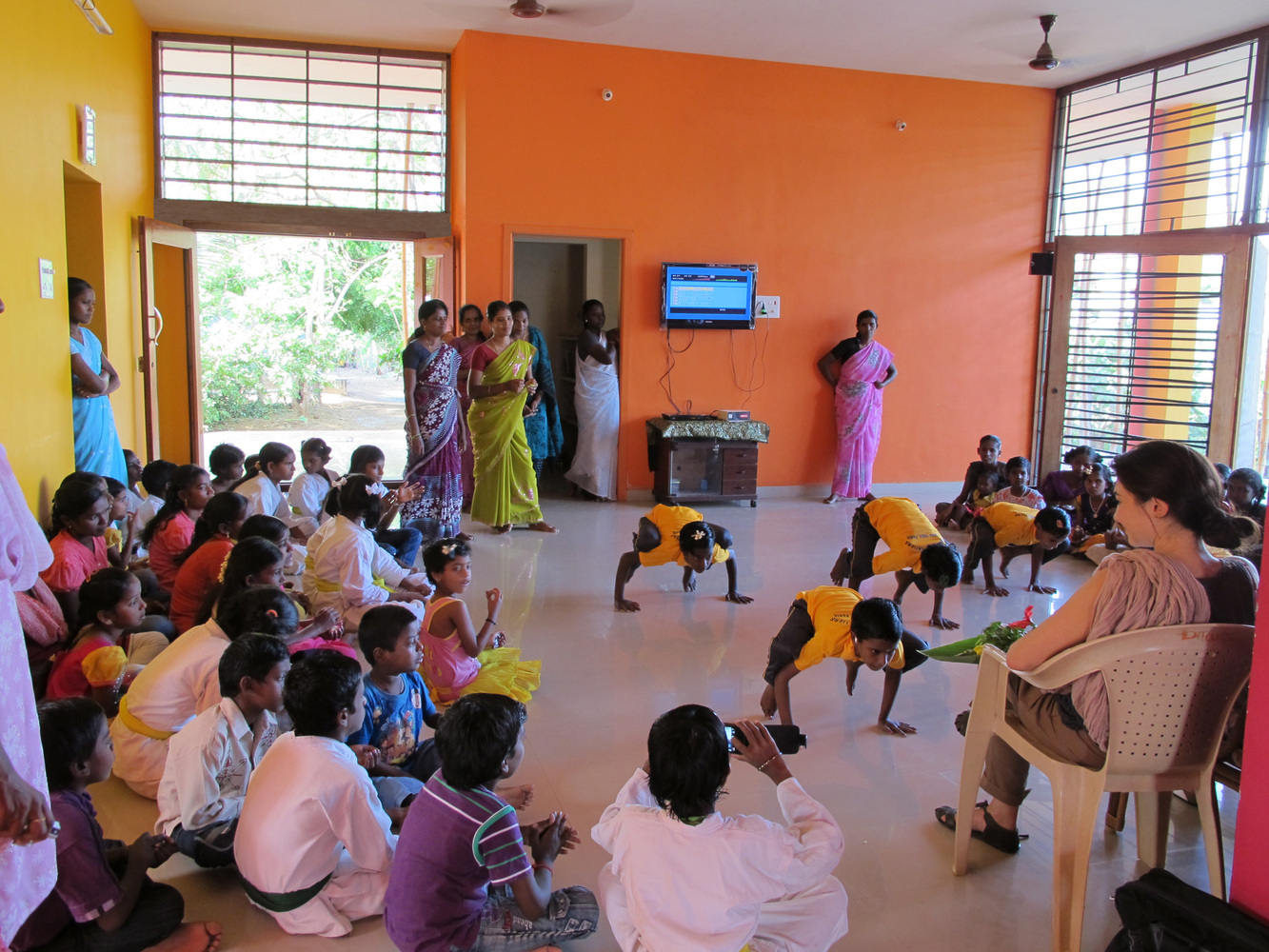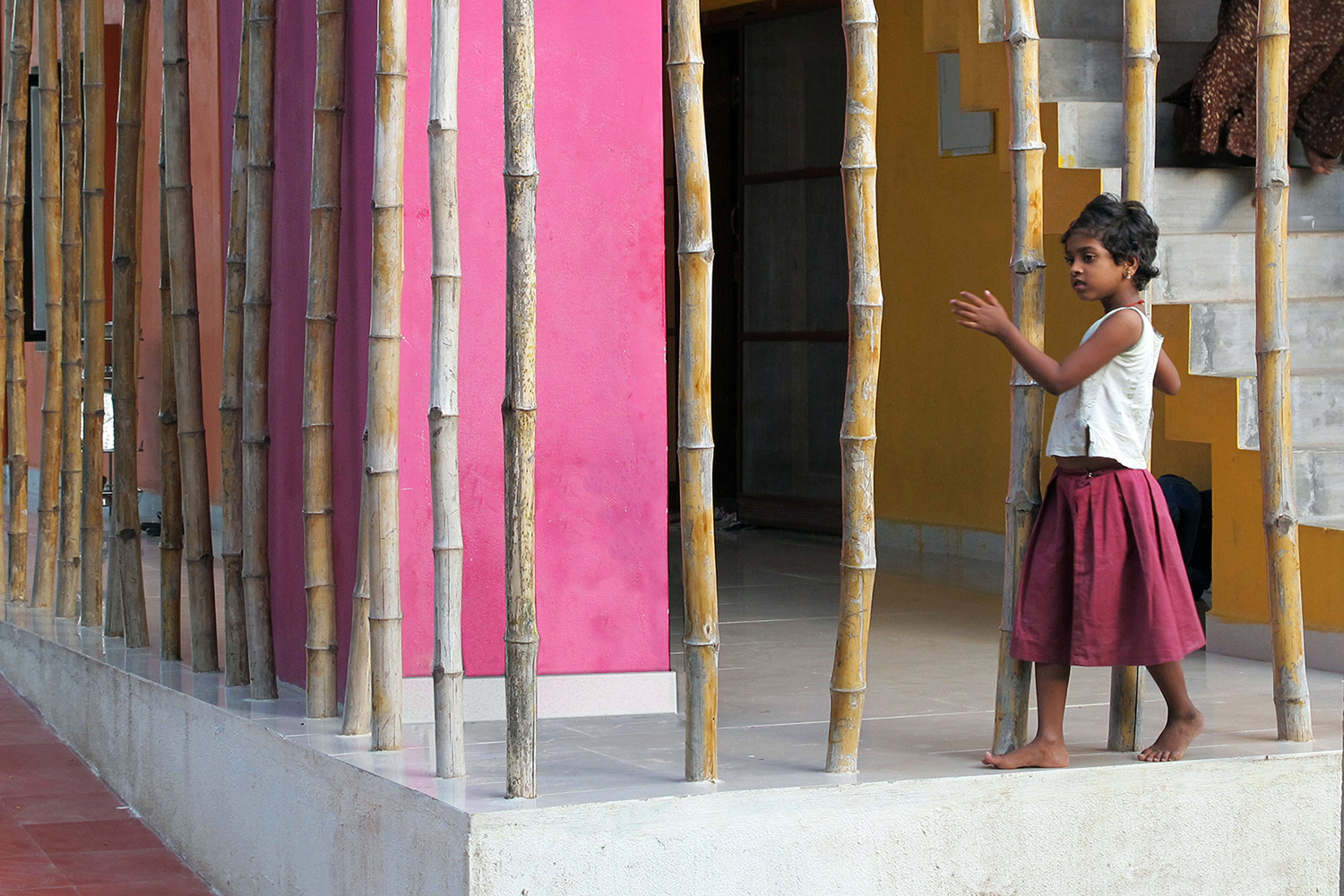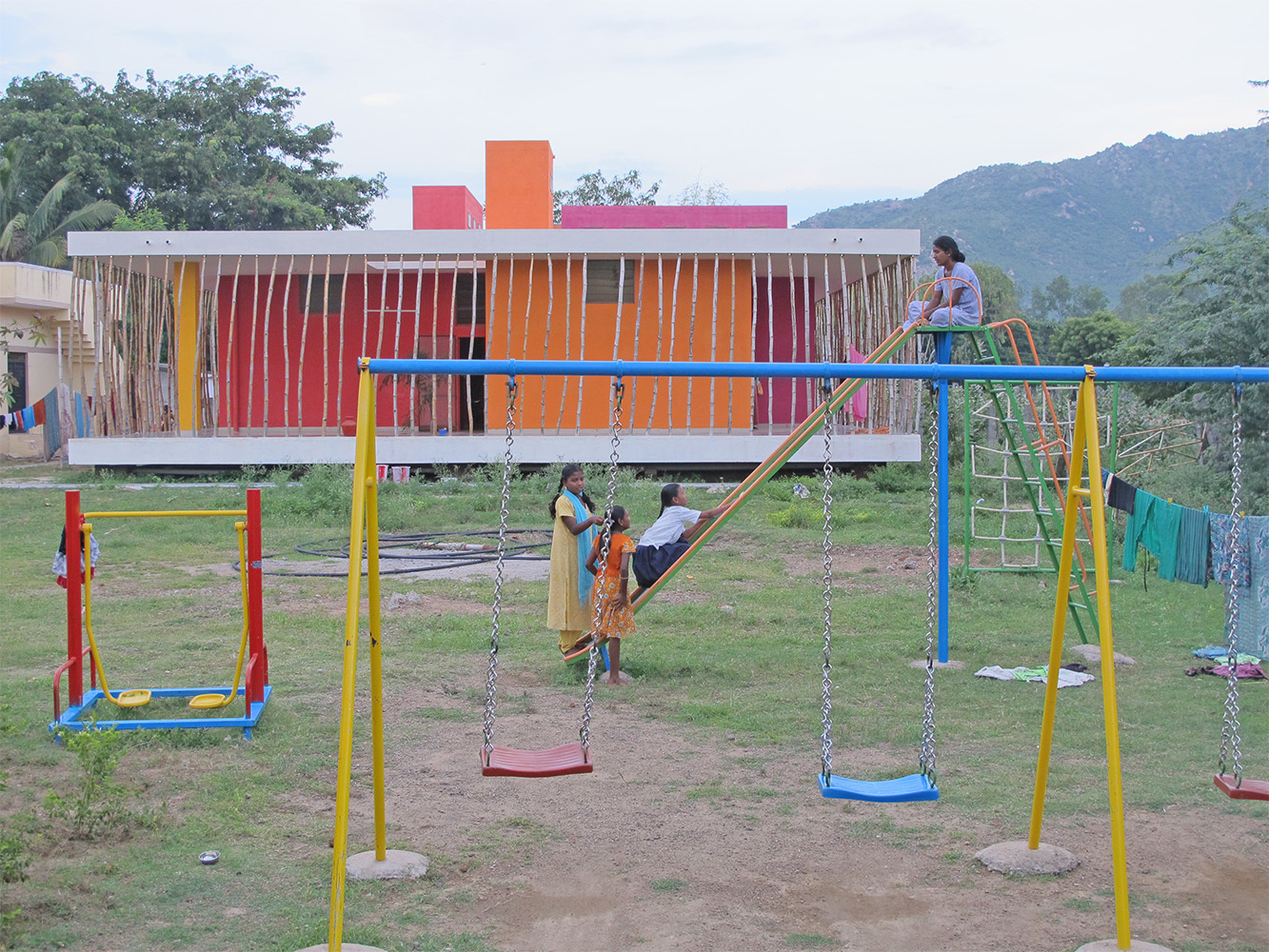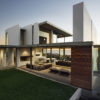Casa Rana is a foster home for fifteen HIV-positive children in Anaipirandhan Village in Tiruvannamalai, India.
Designed by Made in Earth (an Italian group of architects in partnership with NGO’s) on a shoestring budget of € 70000 the 150sqm building structure is composed of two monolithic concrete slabs for the floor and the roof, within which five colored boxes are arranged to contain necessary functional spaces. The space between these boxes provides common and distribution areas. Colored small volumes stretch out from the wide roof as skylights and chimneys for natural ventilation, much like construction toys. The entire building is enveloped by a unique bamboo curtain, which creates shaded areas between indoor and outdoor spaces.
PROJECT DESCRIPTION
When really designed for people, architecture improves the environment and supports human lives. Guided by this overall aim, in 2010 the Italian NPO (non-profit organization) Made in Earth (MiE) has started collaborating with the Indian NGO Terre des Hommes Core Trust: the goal is to create an integrated network of buildings and activities for needy local communities in Tamil Nadu region, following them from early childhood and continuing through their education and beyond.
Settled in a green environment at Anaipirandhan Village, Tiruvannamalai, the Casa Rana project is the first completed project, it is part of a special care program for abandoned or parentless children. The foster home hosts fifteen HIV-positive children in a loving family atmosphere where they are also engaged in vocational trainings and educational activities.
DRAWINGS COURTESY ARCHDAILY
The building structure is composed of two monolithic concrete slabs, the raised plinth and the walkable roof. Within them five brick colored boxes are freely disposed and contain all required functions: three dormitories, the mummy’s bedroom and office, shared bathrooms, the living room and one kitchen with a separated larder. Interior empty spaces define gathering and distributive spaces. Colorful volumes stretch out from the wide flat roof as skylights and chimneys for natural ventilation, looking like construction toys. A bamboo curtain wall envelopes the house, creating shaded areas between indoor and outdoor spaces.
The design process has involved all the users and it especially focused on the participation of children with drawing and game activities. The project layout takes care of different needs: children feel protected and free to play, while mummies can be confident to manage their conduct.
The project considers the local context in terms of resources, building materials, workers’ knowledge as well as social and technical costs. Working in third-world countries, architects need to forget bucolic visions and deal with complicated realities where, for example, concrete is sometimes more affordable and readily available than bamboo. Therefore, Casa Rana matches together traditional building techniques and products of modern market.
The construction phase has involved local labor, expertise and other community members to foster their autonomy and achieve social inclusion. As a kind of urban acupuncture, this synergetic system of small-scale interventions can be well managed by the community ensuring sense of ownership and strengthening local identity.
Our projects are part of a system of small-scale interventions that can be managed by the community. This then ensures a sense of ownership and strengthens local identity. Besides the stimulating opportunity offered by each project, MiE endorses local integrated programs and assists in other community-driven projects. MiE’s mission is to combine ethical and aesthetic values in order to protect people dignity, with a real attention to their needs. In this way, architecture becomes a chance to pursue bigger goals—this is our idea of sustainability.
The ongoing design program aims to gradually restore and revitalize traditional materials and building systems to preserve cultural diversities. MiE offers architectural services for humanitarian projects and acts to connect beneficiaries, local organizations and donors willing to fund projects of development cooperation. MiE finds resources, coordinates activities, blends local skills and its professional expertise to assist community-driven programs.



